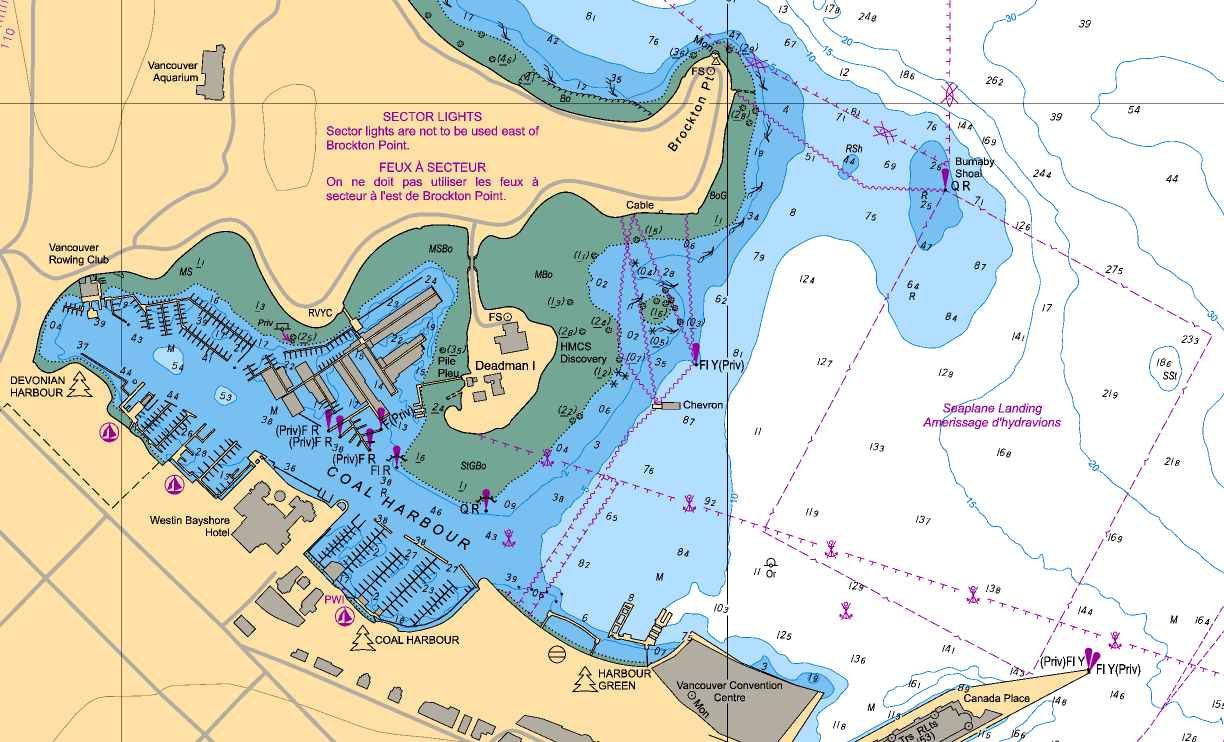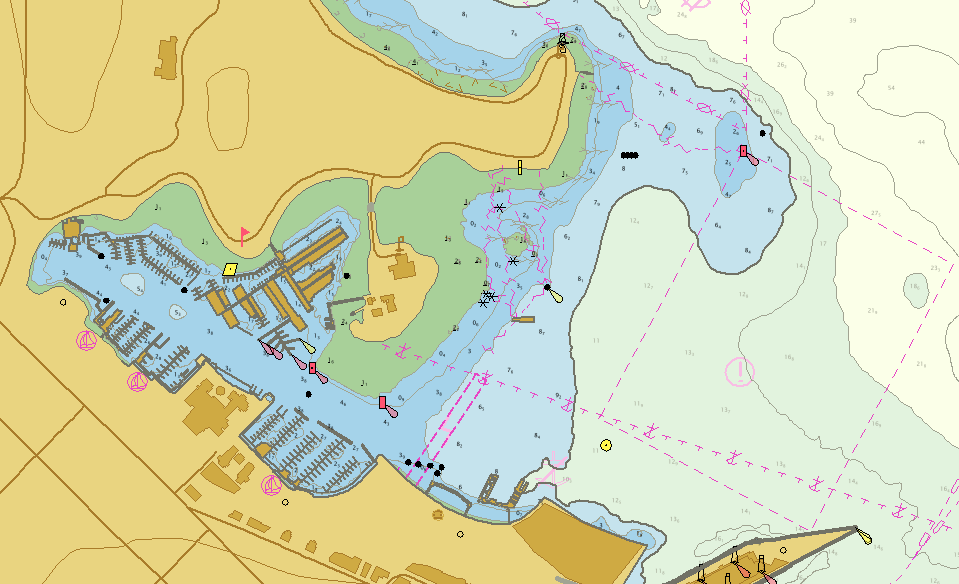What is the difference between a raster chart and a vector chart?
Many Canadian Hydrographic Service (CHS) charts are available in digital form as either a Raster Navigational Chart (RNC) or as a vector Electronic Navigational Chart (ENC). Both charts use navigation software to provide navigators with an electronic alternative to paper charts, resulting in safer navigation.
RNCs are simply an electronic image of a paper chart. They are digitized by scanning the paper chart and converting each line to a raster picture element or “pixel”. Beyond geo-referencing (positioning the scanned chart so that it appears in the right location with correct x and y coordinates), there is no intelligence or extra data in the raster image.
ENCs are "smart charts", which means the user can click on different features, such as a light or buoy, to retrieve additional information not available in paper or raster charts. For example, a wharf appears only as an image on an RNC, but an ENC can identify it as a wharf and attach attributes to it such as height, length, age, ownership, number of berths, etc. This additional data, which is contained directly within the ENC, might otherwise only be available by consulting the relevant Sailing Directions publication.
ENCs used on an Electronic Chart Display and Information System (ECDIS) and integrated with other data such as GPS position, radar, planned routes, heading, speed, and draught, assist mariners and alert them to sailing hazards, warnings, and dangerous situations. ENCs are powerful and flexible navigational tools that provide users with more control over the display of the chart.
- Date modified:

